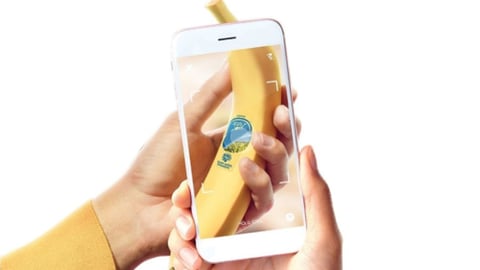2019 Outlook: The Year Grocers Connect Everyday Activity and Ecommerce
(Editors' note: This is part five of a five-part series)
The year 2018 was when some of the nation’s top grocers really began to dip their toes in the waters of contextual commerce — the concept of supermarkets’ making it possible to purchase products through everyday activities.
For instance: Kroger launched voice-assistant ordering across a number of its banners; Amazon and Whole Foods got “plugged in” to smart ovens; and Walmart, Albertsons and other grocers began connecting their ecommerce programs with shoppable recipes. So it’s right to expect that as food retailers continue to invest further in technology and their omnichannel strategies, 2019 will be a very big year for contextual commerce.
Read Our 5 Predictions of How Grocery Technology Will Transform in 2019
- Introduction: What to Expect in Grocery Technology in 2019
- Part One: The Year Grocers Bridge the Digital and Physical
- Part Two: The Year Grocers Crack the Code to Ecommerce Profitability
- Part Three: The Year Grocers Make the Shopping Experience Mobile-Centric
- Part Four: The Year Grocers Bring Endless Aisles In-Store
Arguably, browsing via voice assistants will be one of the chief areas that grocers will address with contextual commerce in the new year, given that the process of shopping online is visual, and shopping via voice assistants is anything but. Repeat orders are easy enough, but the grocery industry was designed on the browsing model and orchestrating sales through careful placement, argues Ben Lamm, founder and CEO of Austin, Texas-based machine-learning and artificial-intelligence (AI) company Hypergiant. Grocers have only just begun to find ways to expand choice and simulate browsing through contextual commerce.
“I think recommendations for upselling and cross-selling in grocery are a huge area of opportunity that would have a direct benefit for consumers — and something we’ll see much more of in 2019,” Lamm says. “Imagine ordering a pasta and being recommended a specific sauce or wine to pair. This would potentially reinvent the grocery shopping experience and provide a great deal of value to the customer.”
Additionally, contextual commerce will evolve from making the shopping experience more convenient for consumers to outright empowering them to get the best possible deal at any time, forcing grocers to ensure that they’re always working to provide the best price possible.
For example, any shopper can find a recipe online that, when clicked, allows them to purchase ingredients directly from local grocers. However, as more grocers get on board with shoppable recipes, there will be stronger competition to offer the best prices in a given market, offers Jonathan Cherki, CEO of ContentSquare, a user experience (UX) strategy company based in New York.
But empowerment won’t be limited to price comparisons. Lamm notes that one of the greatest benefits of contextual commerce in the grocery industry will be better information for consumers.
“If we can develop systems that contain information on food origins, nutrition information and other valuable data for consumers, it can transform how we shop and think about food,” he explains.
Then there are several in the industry who go as far as to say that in 2019, smartphones will be smart enough to identify, through the snap of a picture, not only an individual product, but also the products that make up a larger meal.
“By the end of 2019, I predict that people will be able to see food that someone is carrying — or even food in a restaurant — [and] take a picture of that food on their smartphone for the phone to analyze the exact food type and ingredients,” says Stacy Caprio, founder of Chicago-based digital consultancy Accelerated Growth Marketing. “Then the phone will be able to place the order for those ingredients or food, and the person will be able to walk home and have the grocery box with those food items sitting at their doorstep.”






